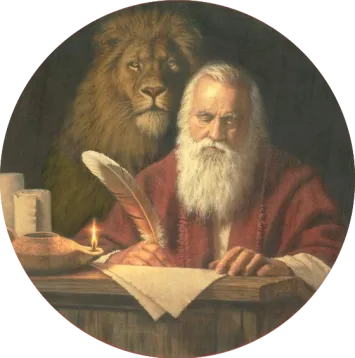The Merchants in the Temple And Deep Personal Prayer
These various reflection on Gospel characters hopes to show the importance of deep personal prayer. In some examples, the absence of this prayer is also insightful.
Jn 2:13-22
No doubt, the merchants in the Temple were shocked by Jesus’ astonishing attack on the commercial situation that had evolved out of the Law’s mandate to offer sacrifice. It is hard to believe that they were not baffled and blind to the corruption and distortion of faith that Jesus was confronting and exposing.Most likely, the vast majority of the merchants started their job with a great deal of good will. Not only did they have an opportunity for a good job to support their family, they were able to express their faith and support the community of believers in professing their religious responsibilities and obligations. It surely started out for most as a win/win situation.
How did it come to the point that led to Jesus’ radical challenge: “Stop making my father’s house a marketplace.” (Jn 2:16) These activities had slowly but inevitably moved away from service to God to service for profit. The pull of the deception of easy money ate away at the spiritual foundation of their ministry in support of the most sacred place of worship in the Jewish faith.
This misrepresentation and self-deception is a common experience for those involved in religion either as professional workers or as committed volunteers. The Golden Calf never is far from the surface in the world of religion. Money has an awesome pull that misleads and betrays in the service of God and religious institutions even though committed to an exalted goal.
II
I was a pastor in a poor parish in South Central Los Angeles for twenty years. I recall two encounters with the insidious pull of the Golden Calf. I am sure there were many more. The first was with a Development Board made up of several generous and wealthy benefactors. Their activities raised tens of thousands of dollars on a regular basis. This money supported new buildings, projects, programs and personnel. It was a great temptation to lose the focus on the basic mission of evangelization and ride the wave of material success and progress.
The second issue was a situation in a much smaller economic reality at our annual festival. It involved less than three thousand dollars. There were several groups that had sales of their ethnic food specialties at the event. At the beginning all shared the good will of working to help the parish better achieve its mission to serve the gospel. Gradually, however, a truly negative competition developed between the groups to see who would raise the most money. In the end, it ended up a long, long way from the gospel mission.
Just imagine if this was the case in a poor parish, just how much more these negative factors come into play in a “successful” parish or institution or religious TV program. There is no doubt the negative thrust of the Golden Calf is fully operative under the guise of many good causes and projects. Jesus would need more than a cord to cast out the merchants of deception if he returned to our churches today.
III
The question is, how did the merchants in the Gospel story, along with their compatriots of today, slip from the good-willed Temple workers and servants of the people to be servants of the Golden Calf and the profit motive.The answer for the Temple workers and all of us today is the deceptive power and demands of the ego. The ego’s agenda is to make us the center of all activities. When it comes to religion and spirituality, the ego has singular powers to deceive us. It produces false motives, drawing us away from service and sacrifice. The ego has despicable capabilities to center on the selfish motives rather than God’s priorities. It has determined the way of the world since Adam and Eve ate the apple.
For centuries the Church has carried the burden of a clericalism and sexism that has been accepted as the norm. In recent times that has begun to change. It was this kind of institutional blindness that gave us the sexual abuse scandal and crisis.
It is the very nature of deep personal prayer to enlighten the forces of evil in each of us and in our culture and institutions. Self-knowledge is one of the great blessings of deep personal prayer. It slowly opens a path to freedom from the forces of darkness that support all the deceiving appeals of the Golden Calf and all other idols.
When we pray regularly there is a steady confrontation with the influences of the ego. Sometimes the conflicts are gentle and sometimes they are fierce. Faithfulness to deep personal prayer will guarantee a gradual diminishment of all factors pulling us away from God.
This is what the merchants needed to respond to Jesus’ challenge. They needed to search for the light of God’s will and to find strength in work and commitment in doing God’s will.
Any movement away from the clutches of the Golden Calf is a demanding venture. Deep personal prayer exposes the lies of the ego. It calls us to new values rooted in the gospel. It calls us to new action in the footsteps of Jesus.















